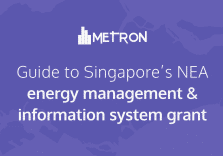In your ecological transition journey, managing the risks and associated costs is a major challenge. In this context, the ISO 14064 standard is a valuable tool. It goes beyond the requirements set by the GHG Protocol and helps companies obtain an optimal vision of their greenhouse gas (GHG) emissions. But what is it more precisely? Why is it an opportunity to comply? And why use a digital solution in this context? Let's take a closer look at the ISO 14064 standard and its advantages for reducing your company's carbon footprint.
Principles and specificities of the ISO 14064 standard
What is the ISO 14064 standard?
The ISO 14064 standard deals with the quantification and reporting of GHG emissions. For governments and industry alike, it is a framework that can be used to assess GHG emissions, either for reporting purposes or to measure reductions achieved through improvement projects.
The standard consists of 3 parts.
- ISO 14064-1: the first part considers the measurement and reporting of GHG emissions for an organization as a whole.
- ISO 14064-2: here the measurement, monitoring and reporting of GHG emissions are more specific to projects.
- ISO 14064-3: the principles, requirements and guidelines set out in this last part are aimed at those responsible for validating and verifying GHG statements.
Depending on the specific needs, they can be applied separately or together.
Why comply with the ISO 14064 standard?
There are several advantages of being ISO 14064 compliant. In particular, it allows you to:
- Prove that your documents are reliable, without errors, omissions or inaccuracies (GHG inventory, declarations and reports)
- Validate the baseline scenario established for the reduction of your emissions
- Demonstrate the significance of the avoided emissions over a period of time.
By applying the standard, your GHG emissions reduction efforts gain credibility, legitimacy and transparency. They are confirmed by concrete, accurate and verified results.
What are the differences between the ISO 14064 standard and the GHG Protocol?
The Greenhouse Gas Protocol (GHG Protocol) is a guide to harmonize the inventory and management of GHG stocks at the global level. It provides an international framework for measuring and reducing emissions from public and private sector operations.
As it was not designed as a standard, the GHG Protocol cannot be audited. While it is useful for inventorying greenhouse gas emissions, it must be supplemented by the ISO 14064 standard to be certified.
Applying the standard also leads to better results in terms of emission reductions.
ISO 14064 compliance: the benefits of a digital solution
A more detailed analysis of emission indicators
To save time, the KPIs used to measure emissions in companies most often correspond to the indicators for scopes 1, 2 and 3 defined in the GHG protocol and included in the standard:
- Scope 1 for direct emissions from fixed or mobile assets located within the company's perimeters
- Scope 2 for indirect emissions associated with the production of energy (electricity, heat or steam) imported for the organization's activities
- Scope 3 for other indirect emissions (including the purchase of products and services, fixed assets, waste treatment, upstream transportation of goods, business travel, etc.)
Thanks to more precise data which is extracted and visualized more easily with a digital solution, it is possible to go far beyond these traditional indicators. This allows for a more precise and complex analysis of the situation.
Faster response to anomalies
Thanks to real-time visibility of performance indicators, it is also possible, with a digital solution, to act immediately when an anomaly is detected.
In fact, setting up an energy management system does not only consist in the extraction and analysis of historical data. For an improved approach, it is also necessary to be able to respond immediately and apply corrective measures as soon as possible. This is impossible to implement with a manual analysis.
A reliable source of information to support the audit
Finally, a digital energy management solution allows companies to have an objective and analytical view of the carbon emissions generated by their activities. For a CSR manager, this provides a wealth of quantitative and qualitative information, which is necessary for reporting, and to act quickly in case of deviations. During an audit, the data can also be transmitted immediately to the auditor in a reliable way.
To be able to quantify, monitor and report your GHG emissions in a consistent and credible manner, you need accurate and qualitative data. The ISO 14064 standard can serve as a framework for setting up the necessary collection mechanisms. With a digital solution, you then have all the data you need to comply and take advantage of this energy transparency to effectively reduce your GHG emissions.
Do you want to embark on an ISO 14064 compliance process? METRON's experts are here to assist you in the digitalization of your production sites.










